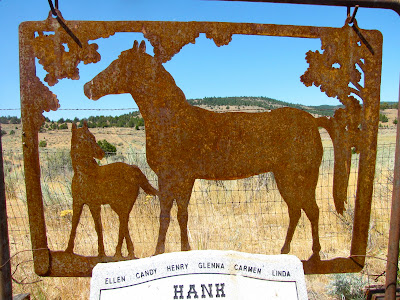 |
| Pettys Cemetery, Ione, OR |
Second, skip the bluegrass.
Rhythm banjo. I don’t like that barrage of notes that banjo players insist on throwing at the listener. I’m too old to get that fast. And they tend to loose the rhythm in that machine gun fire. It’s as if they don’t want you to hear the individual notes: “If I play incredibly fast, everyone will be so wowed that they won’t notice it’s a banjo.” When I first began to coax individual notes out of the banjo, I thought it sounded Japanese. Now I think of it as swamp rock banjo. Just what you’d expect there in the Northwest.
But I digress.
I’ll admit that I go through ten minutes of guilt everyday because I haven’t written anything lately for this blog. Then I get over it and go on with my day.
 |
| Denio Cemetery, Denio, NV |
 |
| Unity Cemetery, Unity, OR |
As I’ve noted elsewhere, one goes east to go to the West, if one lives on the wet (no, there should be no “s” in that word) side of the Cascades, which most of us do; but the West of Oregon is a far cry from the West of Colorado or Montana. That West got taken over by Hollywood, Las Vegas, and Texas. Less show and more grit up here. I don’t come here to get away from it all; I come here to come here. The photos are all up on Flickr.
 |
| Sunset Cemetery, Ontario, OR |
 |
| Lone Fir Cemetery, Portland, OR |
“Here we lie by consent, after 57 years 2 months and 2 days sojourning through life awaiting nature’s immutable laws to return us back to the elements of the universe, of which we were first composed.”
This is a mighty strong faith being expressed here, a faith in Mother Nature. It set a tone for the cemetery which rings to this day. Conventional religion creeps in here and there—it’s a cemetery, for Christ’s sake—but the overall ambiance is a full appreciation of this world and its universe. Carl Sagan could have written that epitaph. It’s why my wife and I chose to be buried here. And we were lucky; shortly after we purchased our plots, they closed sales on new ones.
But I digress again. Enough about me.
Another category is as subjective as design: interesting epitaphs. No “Gone but not forgottens,” okay? A third grouping is more defined: cameos, either photoceramics or portrait engravings; while the final sets have hard-and-fast edges: all Woodmen of the World and all white bronze markers. I did this survey with an eye towards A) giving tours of Lone Fir; and B) publishing a small guide to the cemetery. You’ll notice, none of my classifications have anything to do with who is buried there; that’s for the local historians and genealogists, whom I wish well.
But I couldn’t compile a guide to the cemetery without some knowledge of how it came together, so that’s taken me into a little research; which is all a round about way of explaining why I have ignored my guilt feelings and marched on with what I’m doing.
Then there’s the book effect. Having a book published is a little like getting a doctorate: instant credibility (unless you publish it yourself, then it’s an Internet diploma). Instant credibility is handy and a large part of the reason why the book came out as it did. When Ashland Creek sent an email inquiring if I was interest in putting a book together, I instantly knew that the important feature here was to get it published. And the sooner the better. Ashland Creek thought sooner was better for marketing purposes, and I thought sooner would be better for marketing myself. My presumption was the second book would be easier to publish than the first; hence I made almost no fuss with whatever Ashland Creek wanted to do. My mantra was, “If you guys like it, I like it.”
That worked.
My focus, though, is on the future. The next time I’ll have a little more freedom to say, “No, the monkey in the gray flannel suit stays.”
 |
| Sunset Cemetery, Ontario, OR |

No comments:
Post a Comment